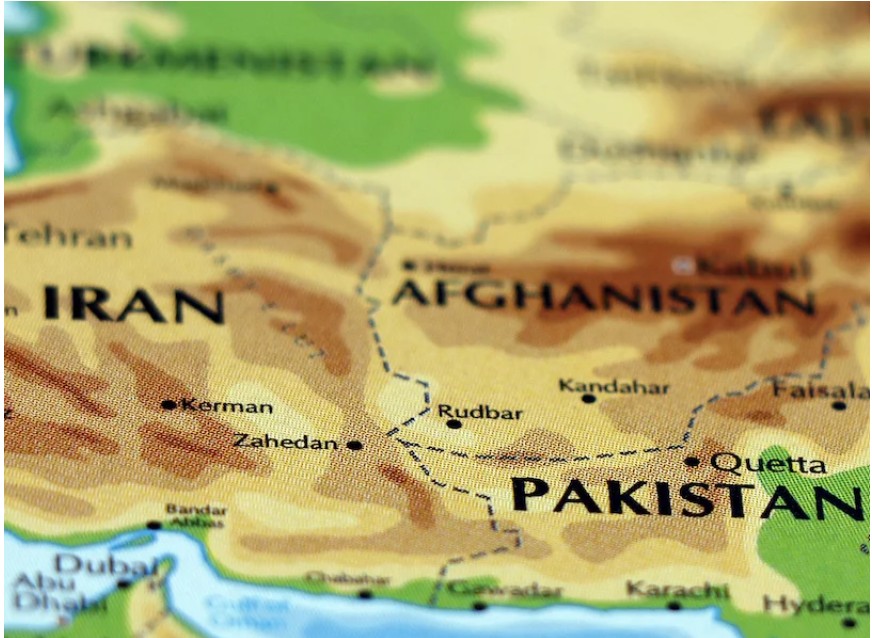Iran is building walls along its national boundaries, particularly focusing on its eastern borders with Afghanistan and Pakistan.
Iran shares more than 5800 km (3600 miles) of land border with seven countries: Afghanistan and Pakistan to the east, Iraq and Turkey to the west, and Armenia, Azerbaijan, and Turkmenistan to the north—which makes border security a complex and resource-intensive challenge. On the eastern borders, around 150 kilometres of these walls have already been built.
During his visit to the south-eastern city of Mirjaveh in November of 2024, the primary crossing point between Iran and Pakistan, in November of 2024, Interior Minister Eskandar Momeni highlighted that the first phase of the border-sealing initiative spans approximately 90 kilometres and commenced at the end of June. He stated, “Based on our projections, this border-blocking project is expected to be completed in the first half of the next Iranian year.”
Objectives:
- Tackle with Afghanistan’s political instability and resultant rise in terrorist groups in the region.
- In response to the Taliban’s 2021 resurgence, which has left Afghanistan in a state of governance vacuum and instability.
- Iran-Afghanistan border has not been a zone of conflict. However, the rapid political transformation in Afghanistan—marked by the Taliban’s ascent and the resurgence of various militant groups (like the Islamic State – Khorasan Province (ISKP) and the Tehreek-i-Taliban Pakistan (TTP))—has forced a reassessment of Iran’s security priorities. Iran’s decision to fortify its border reflects a shift toward a more defensive stance, acknowledging the rising regional threats posed by Afghanistan’s instability
- Crucial for addressing security challenges in the Sistan and Baluchistan province, which has faced numerous attacks on civilians and security forces In the past years. The Jaish al-Adl terrorist group, known inside Iran as Jaish al-Zulm and backed by Israeli and Western intelligence, has been responsible for the deaths of hundreds of innocent Iranians.
Iran is now the largest host for refugees in the world, with the majority coming from Afghanistan, though Tehran has expelled approximately 100,000 refugees since the beginning of the year
The border wall aims to prevent the smuggling of fuel, goods, and narcotics while also curbing illegal immigration.” Around 80% of illegal drugs in Iran originate from the borders with Pakistan and Afghanistan.
Positive Implications for Geo-politics
- Could redefine regional strategic alliances, particularly with Pakistan and Central Asia
- For Pakistan, Iran’s wall may validate its own security concerns. Facing similar issues with cross-border terrorism, Islamabad has long sought to secure its frontiers.
- This may also affect Afghanistan’s diplomatic engagements. Iran’s fortified stance could push the Taliban to seek more genuine cooperation with regional partners, particularly in negotiating security pacts or joint counterterrorism efforts. Such moves would be critical for long-term regional stability and could foster a new sense of interdependence between Afghanistan and its neighbours.
Negative implication
- Illicit cross-border trade is a significant source of income for many residents in Iran’s border provinces of Kurdistan in the West and Sistan- Baluchistan in the Southeast.
- Residents will still have access to designated customs points and trade hubs, but any large-scale border fortifications are likely to raise economic concerns in the deprived, restive communities.
Pakistan stance
- At the sixth Pak-Iran border committee conference in Mir-Javeh in October 2023, officials from both nations decided to build a barrier along their shared border to deter unauthorized crossings and fight smuggling.
- To stop illicit crossings and fight smuggling, the committee stressed that the entire border would be fenced.
- Pakistan has also been actively engaged in projects related to border barriers. With continuous attempts to further protect the border, the Pakistani military claimed in August 2021 that 58% of the fencing along the Iran- Pakistan border had been finished.
- These programs demonstrate a common commitment to strengthening border security and tackling issues, including illicit border crossings, terrorism, and smuggling.

